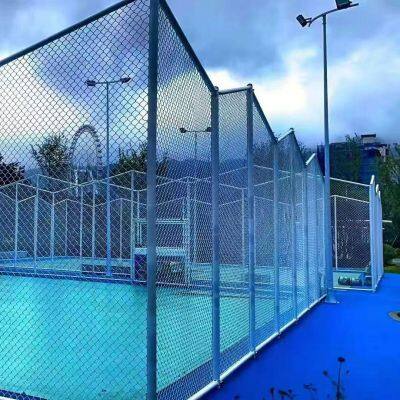-
 Liu
Hi there! Welcome to my shop. Let me know if you have any questions.
Liu
Hi there! Welcome to my shop. Let me know if you have any questions.
Your message has exceeded the limit.

Different Types of Metal Fences: A Comprehensive Guide to Metal Fencing
2025-10-11 15:17:49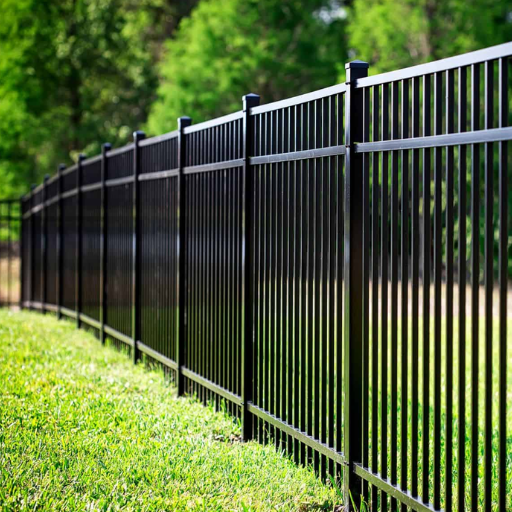
Metal fences are a great choice if you want to ensure safety and, at the same time, beautify your property. This is because metal fences are not only versatile but also durable options. Today, whether it's a classic wrought iron design or a modern aluminum panel, the variety of metal fence options available is extensive enough for homeowners and businesses to satisfy their specific needs in terms of both functionality and style. This in-depth guide will discuss the different types of metal fencing with their features, advantages, and best applications. Suppose you are after maximum security, timeless elegance, or low-maintenance solutions. In that case, you will find this article very helpful in choosing the ideal metal fence for your area.Find more info now.
Understanding Metal Fences
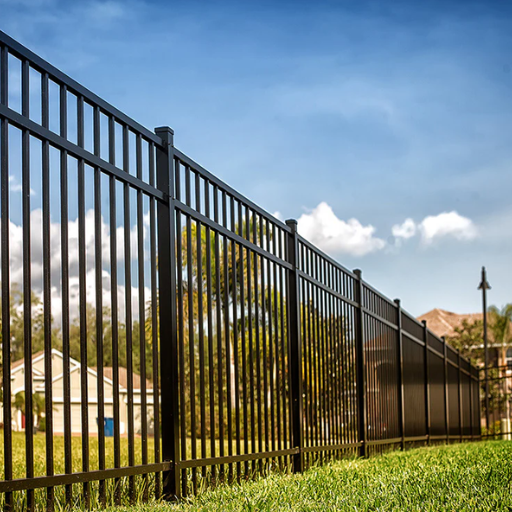
Metal fences are very flexible and durable solutions for different properties. Commonly used materials for metal fencing consist of aluminum, steel, wrought iron, and chain link. Aluminum is a metal that is not heavy, does not rust, and is easy to maintain, making it perfect for decorative purposes. Steel gives top-notch strength and security and is often used for high-security applications. Wrought iron is recognized for its beauty that never fades and is often selected for ornamental designs. At the same time, chain link parks are economical and serve well for large areas where a defined boundary is necessary. Before deciding on a metal fence, weigh up security requirements, aesthetic options, and maintenance needs.
Purpose of Metal Fencing
Metal fencing is a versatile offering, and its benefits range from the very practical to purely aesthetic ones. Below are five key purposes of metal fencing:
Security and Protection
Metal fences offer a high level of security and protection, keeping unwanted people out and securing properties. Steel and wrought iron fences rank among the most durable materials due to their hardiness and resistance to vandalism.
Boundary Definition
Metal fencing is the best and most reliable way to mark property lines, reducing the chances of disputes between neighbors and defining the areas of industrial or agricultural land.
Aesthetic Appeal
Besides being strong, aluminum and iron fences can add significant value to a property with their rich and traditional designs, boosting curb appeal and serving a functional purpose as well.
Durability and Longevity
Unlike other fences made of wood or vinyl, metal ones, such as wrought iron and steel, are strong, do not deteriorate, and are highly resistant to the elements, insects, and the passage of time.
Safety and Protection for Children and Pets
Metal fencing provides a safe and enclosed area, preventing children or pets from straying and keeping them secure in areas like backyards or gardens designated for their use.
Advantages of Metal Fences
Strength and Security
When it comes to their strength, metal fences are hard to beat, making them effective at preventing intrusions and trespassing. Studies have indicated that properties that have installed metal fences experience up to 30% fewer break-ins than those without. Their solid construction makes them a perfect choice for security needs in both residential and commercial areas alike.
Low Maintenance
Metal fences require the least maintenance compared to wood, which usually needs staining, painting, or sealing every few years. Today's metal coverings, such as galvanized steel or powder coating, will be resistant to rust and corrosion so that they can perform for a very long time with almost no effort on the part of the homeowner.
Versatile Design Options
Metal fences are highly customizable and come in various styles to suit different tastes whether modern or classic, metal fences will always enhance the look of a property while remaining functional.
Durability Against the Elements
Fences made of metal, especially steel or aluminum, are very strong and can endure even the most severe weather conditions such as heavy rains, snow, and hurricanes. Some reports indicate that properly installed and maintained metal fencing can last anywhere from 20 to 30 years and even longer, whereas wooden or plastic alternatives would probably last much shorter.
Environmentally Friendly
Recycling is a common practice among manufacturers of metal fences, as most of the materials used are recycled. This way, the home of the environmentally conscious consumer is not only built using sustainable means but also indirectly supports environmentally friendly building practices through the metal's recyclability.
Common Types of Metal Fencing
Aluminum Fencing
The main properties of aluminum, such as lightness, rust resistance, and low maintenance, make it a widely adopted fencing material among homeowners. Although it is not as tough as wrought iron or steel, aluminum still provides the necessary durability for residential purposes. Metro data suggests that aluminum fences can last up to 30 years or more with proper maintenance. Additionally, they are frequently powder-coated to increase the weather resistance of the material. The average fencing price for the aluminum one is about $20 to $40 per linear foot, depending on the design and quality.
Wrought Iron Fencing
Wrought iron fencing has been a classic, decorative style to the present day. Due to its very high fortitude, wrought iron fences can withstand severe weather conditions. On the downside, these fences need painting as part of a maintenance routine to avoid rust, which requires spending on materials and labor. Fencing made with wrought iron can last for many years, usually over 50 years with proper care. The current market prices indicate that the cost of wrought iron fencing is between $30 and $50 per linear foot, making it a luxurious option in terms of both appearance and durability.
Steel Fencing
Steel fencing is a lot stronger and lasts longer than many other metal fencing options. A galvanized or stainless steel fence is a highly resistant steel that will even survive in coastal areas where there is a lot of salty air making such areas potentially harmful to the fencing material. Moreover, metal fencing can easily last around 25 to 40 years. The price is usually between $25 and $60 per linear foot, which depends on the type and finish.
Chain Link Fencing
Chain link is primarily seen as a functional option, mainly used for security and privacy in residential and commercial properties. It consists of galvanized or coated steel wire that has really good rust resistance and requires almost no maintenance. It is also the cheapest metal fencing option available, costing from $10 to $20 per linear foot, and has an average lifespan of 15 to 20 years, after which it will need extensive repairs or eventual replacement.
Cast Iron Fencing
Cast iron is another durable fencing material that is also ornate and strong. Even though it is not as popular as aluminum or chain link, it is still widely used for ornamental purposes. Like wrought iron, cast iron is prone to rust if not properly maintained, but it can still last over 50 years with good care. Custom cast iron fences can cost an arm and a leg, often exceeding $40 per linear foot.
Only by knowing the pluses, duration, and prices of the different types of metal fencing can homebuyers select the right one for their properties, according to their tastes and preferences.
Types of Metal Fencing to Consider
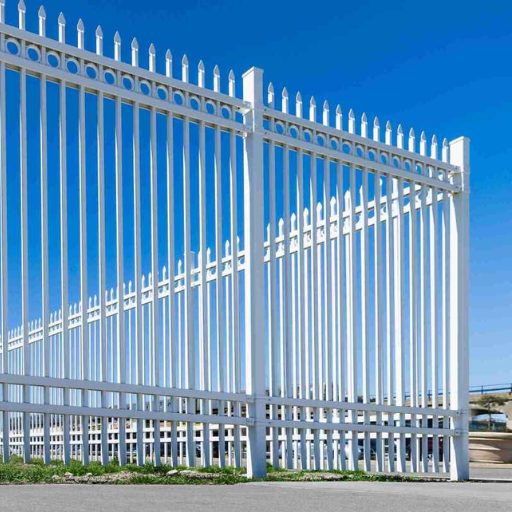
Fence Type | Key Features | Best For |
|---|---|---|
Chain Link | Affordable, secure, low maintenance | Budget-friendly, pet containment |
Aluminum | Rust-resistant, lightweight, versatile | Coastal areas, modern aesthetics |
Steel | Durable, strong, customizable | High security, long-term use |
Wrought Iron | Ornate, elegant, high maintenance | Historic homes, decorative purposes |
Galvanized Steel | Rust-resistant, budget-friendly | Functional, urban properties |
Corrugated Steel | Weather-resistant, privacy-friendly | Rustic or industrial styles |
Steel Palisade | High security, ornamental design | Commercial or industrial properties |
Stainless Steel | Modern look, corrosion-resistant | Contemporary homes, pool fencing |
Wrought Iron Fences
Wrought iron fences were the strongest, most lasting and most elegant fences ever made, and this is one of the reasons they were most preferred when making a choice for residential and commercial properties. These fences, made from iron with a very low carbon content, are often very elaborate. They showcase the artistic work and care that go into making them, thus elevating any space's appearance. The long lifespan of these fences—sometimes up to 70 years—is mainly due to their distinct advantages, such as resistance to impacts and the ability to endure harsh weather conditions with proper care.
Nevertheless, wrought iron is susceptible to rust with time if it is not well-maintained. Along with common preventive measures like repainting and rust-resistant coatings, periodic maintenance is necessary to keep the fence in good condition. Pricing studies from the latest information suggest that standard wrought iron fence designs are in the price range of $24 to $36 per linear foot. Ornate or custom options can significantly increase the cost with prices sometimes going above $40 per linear foot. Furthermore, homeowners must consider the installation expenses, which may range from $300 to $1,000 depending on the project's complexity and size.
Wrought iron fencing, despite higher costs than other materials, remains the most preferred choice for people looking for a blend of looks, protection, and longevity. The classic look of wrought iron not only helps in attracting customers but also gives the property owner an added advantage of being able to protect his property at the same time.
Aluminum Fences
Aluminum fences are the most popular option among homeowners and property managers because they offer several advantages, such as durability, maintenance-free, and a variety of designs. The aluminum fences are quite different from wrought iron, as they do not rust or corrode, making them suitable for areas with heavy rains and high humidity. Moreover, they come in the form of light-weight and easy to use even through difficult installation points, the exact mix of strength and lightness.
Aluminum fencing material usually costs from $20 to $45 per linear foot, depending on the quality, design, and surface treatment. While the installation cost of $2,000-$5,000 is an average estimate for residential properties, these costs are flexible depending on the size and complexity of the project. Additionally, aluminum fences come in a vast spectrum of styles such as ornaments, privacy panels, and picket fences. Moreover, they are sometimes offered in different colors and finishes which include powder coating that not only prolongs the life of the fence but is also very low upkeep.
Among the various merits of aluminum fencing, one that is particularly highlighted is its suitability for use with slopes. The rackable aluminum fence panels can be fitted on the uneven ground without leaving the gaps that would compromise both security and aesthetics. Plus, aluminum fences are eco-friendly because, in most cases, the products are made from recyclable materials, thus keeping in line with sustainable construction practices. No matter if you are a designer, security, or a long-term value, aluminum fencing could be a modern and trustworthy alternative for both residential and commercial properties.
Steel Fences
The strongest, most durable, and versatile fencing type is steel fences, which are widely used for these reasons. The main material used for these fences is either galvanized steel or stainless steel, providing them with outstanding properties such as resistance to extreme weather conditions, to rusting, and to physical destruction. According to industry estimates, if properly maintained, steel fences could last for 20 or even 30 years, making them the most reliable fencing type in the long run.
One reason steel fencing is so popular is the security it brings to the property. A strong fence acts as a deterrent for intruders and can even withstand considerable force. Additionally, there are many custom-design choices available for the steel fencing, including ornamental design, privacy screen, and modern industrial—the whole range of different forms and styles to cover not only aesthetic but also functional requirements.
The use of steel fences is beneficial for the environment because many companies engaged in manufacturing them incorporate recycled materials in their processes. That not only means lesser consumption of virgin resources but also the promotion of eco-friendly construction practices. Steel fences, although strong, require very little upkeep, usually just occasional cleaning and painting. The advancement of powder coating technology has made it possible to offer coatings that are even harder than the substrate and last longer, providing great aesthetics that will not chip, fade, or rust.
Undoubtedly, steel fences are still the best for elegance, strength, and sustainability, whether for protecting commercial properties or beautifying residential houses.
Chain Link Fences
Chain link fences offer a wide range of applications and are an inexpensive solution for all kinds of properties, whether residential or commercial. These durable, low-maintenance fences have been built from either galvanized or coated steel wire through a weaving process, creating a mesh-like structure. Recent statistics reveal that chain link fences are responsible for about 50% of all fencing installations in the United States which mirrors the popularity of this product due to its low cost, easy installation, and compatibility with different kinds of land.
Today's chain link fences can be personalized with various features, including vinyl coatings, which not only enhance the fence's appearance but also provide extra protection against rust and corrosion. The most common height range is between 4 and 12 feet, which is great for different needs, from marking property lines to high-security applications. Moreover, the quality of galvanized coatings has improved and thus the lifespan of properly maintained chain link fences is increased to 15-20 years.
In addition to home uses, chain link fences are commonly found at industrial sites, parks, schools, and stadiums because of their strength, openness, and the ability to add features like barbed wire or privacy slats. Industry forecasts indicate that the demand for chain link fencing is on the rise due to its practicality and the currant design's ability to cater to varied user needs.
Wire Fences and Welded Wire Fences
Feature | Wire Fences | Welded Wire Fences |
|---|---|---|
Construction | Wires interwoven | Wires welded at intersections |
Durability | Flexible, less rigid | Rigid, long-lasting |
Strength | Moderate | High, resists cutting |
Applications | Gardens, animal enclosures | Kennels, paddocks, property boundaries |
Maintenance | Low, occasional repairs | Low, clean and remove corrosion |
Cost | Budget-friendly | Slightly higher, varies by gauge |
Installation | Easy, requires tensioning | Easy, pre-fabricated panels available |
Lifespan | 5-10 years | 10-15 years with proper care |
Aesthetic Options | Limited customization | Paintable, customizable grid sizes |
Best Use | Temporary fencing | Permanent, secure fencing |
Benefits and Costs of Metal Fences
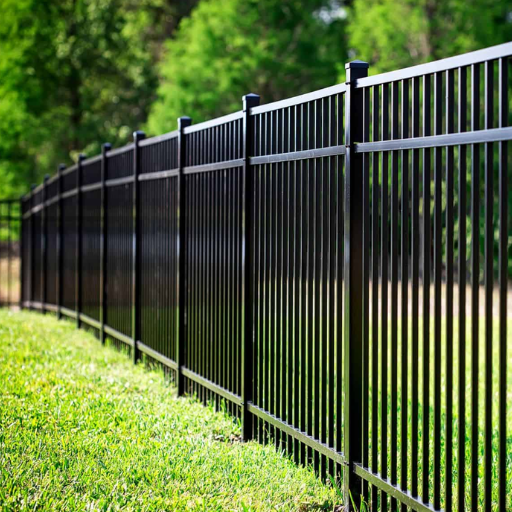
Key Point | Details |
|---|---|
Benefits | |
Durability | Long-lasting, withstands weather and wear |
Security | Strong barrier, deters intruders |
Low Maintenance | Minimal upkeep compared to wood |
Aesthetic Appeal | Enhances property value and curb appeal |
Versatility | Various styles: modern, classic, ornate |
Eco-Friendly Options | Aluminum fences often made from recycled materials |
Customization | Decorative elements, colors, and designs available |
Costs | |
Average Installation | $3,000–$8,000 for most projects |
Per Linear Foot | $20–$85 depending on material and style |
Material Costs | Aluminum: $25–$75, Steel: $20–$80, Wrought Iron: $50–$85 per foot |
Additional Costs | Gates: $200–$7,800; permits: $50–$900 |
Maintenance Costs | Rust prevention and occasional cleaning |
DIY vs. Professional | DIY saves labor costs; professional ensures quality |
Cost Comparison of Different Types of Metal Fences
Fence Type | Cost per Linear Foot | Key Features |
|---|---|---|
Chain Link | $10–$20 | Affordable, low maintenance, secure |
Aluminum | $25–$75 | Rust-resistant, lightweight, versatile |
Steel | $20–$80 | Durable, strong, customizable |
Wrought Iron | $50–$85 | Elegant, durable, high maintenance |
Galvanized Steel | $10–$15 | Rust-resistant, budget-friendly |
Corrugated Steel | $20–$55 | Weather-resistant, privacy-friendly |
Steel Palisade | $30–$80 | High security, ornamental design |
Stainless Steel | $15–$60 | Modern look, corrosion-resistant |
Long-term Benefits of Metal Fencing
Metal fencing offers numerous advantages that can last for long periods, making it a preferred choice in residential, commercial, and industrial applications. The following are the five primary benefits of metal fencing that are discussed in detail:
Durability and Longevity
Fences made of metals, especially when the metal is steel or aluminum, have the highest resistance to wear and tear, adverse weather, and even impacts. A well-maintained metal fence is generally expected to last for 20 to 30 years or even longer, making it a great long-term investment.
Low Maintenance
Metal fencing is the lowest maintenance option compared to all other types of fencing. They are also resistant to rust, corrosion, and fading; thus, the need for frequent repairs or regular repainting is virtually eliminated with the use of protective coatings like galvanization or powder coating.
Enhanced Security
Metal fencing gives strong protection, making it the top choice for securing properties. Their firmness and the possibility of adding more security features like spikes or barbed wire make metal fence a long-lasting option in keeping intruders away.
Aesthetic Versatility
Metal fences come in the widest variety of designs, styles, and finishes, which add visual appeal and make properties more attractive in the long run. The options include elegant wrought iron fences or modern welded wire designs that are made to suit the property's design requirements.
Environmental Sustainability
They are made from recyclable materials, making many metal fences a green option. Plus, by using aluminum or steel, developers can help gradually lower the amount of material sent to landfills since those metals can be recycled or reprocessed at the end of their life.
Maintenance Requirements for Metal Fences
My attention to a metal fence maintenance is directed towards a few main activities. I start by frequently inspecting the fence for any signs of rust, damage, or loose parts, and I address every issue without delay. The fence is cleaned from dirt and debris with soap and water at regular intervals and I make sure it stays in good condition as a result of this. If the fence were the one with paint or a protective coating, I would cover the chipped areas so that no more deterioration would occur. I put lubricant to the hinges, like other moving parts, when necessary in order to keep them working smoothly. By maintaining it consistently, I make my metal fence last for years while retaining its visual appeal.
Choosing the Right Metal Fence
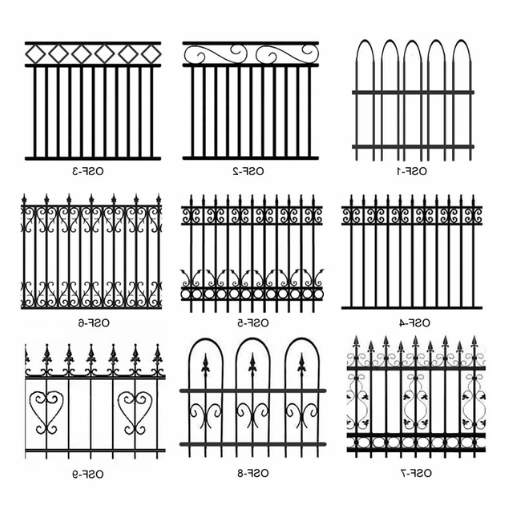
When choosing a metal fence, consider the material, purpose, budget, and overall aesthetic appeal. Wrought iron, aluminum, and steel are the most commonly used materials, and each offers unique benefits and caters to specific needs.
1. Wrought Iron
Wrought iron fences are preferred for their timeless and stylish look. They are extremely strong and can take a lot of abuse without showing any signs of it. Since they are mainly used for setting up boundaries but can be found around garden and parks, their application is wide through both modern and historical locations. On the downside, their prices can be higher than other materials, with installation costs per linear foot averaging about $24 to $34. Furthermore, regular maintenance is necessary to keep the iron from rusting and the fence looking good.
2. Aluminum
Aluminum is a fencing material that provides several benefits but very little weight. It is an economical option compared to wrought iron and provides excellent resistance to corrosion and moisture. Aluminum fences also come in different styles and colors and need very little maintenance to stay in good condition. The price of installing an aluminum fence can range from $20 to $30 per linear foot based on the design and features chosen. However, aluminum fences are not as strong as those made of wrought iron and steel, thus making them less suitable for high-security areas.
3. Steel
Steel fences are a nice combination of strong and long-lasting. Steel fencing is available in both ornamental and sturdy designs and is quite popular for both domestic and commercial fencing. They are very hard to break and can stay rust-free when the galvanization process is done properly. The range of prices for steel fencing is around $22 to $32 per linear foot. Although it is weaker than aluminum, steel fencing is heavier, so it will probably need professional installation.
Other Considerations
Bear in mind the following factors when selecting a metal fence: purpose, local climate, regulations, and budget. Purpose: Is it necessary to secure the property, designate limits, or enhance the visual appeal? Your needs will dictate the material you choose. Local climate: In areas with high moisture, choose galvanized or powder-coated finishes to prevent rusting. Regulations: Check with the local authorities about the fencing laws, which include the height and distance from the property line. Budget: The final cost depends on the material, design complexity, and installation.
Latest Trends in Metal Fencing
Recent industry data reveals that 70% of homeowners choose modern metal fences that require little maintenance, while 60% consider eco-friendly options, such as recyclable aluminum. Smart gates and retractable fences are already fusing security with technology and becoming increasingly popular. Additionally, powder coating technology is making metal fences even stronger and more durable by creating a barrier against environmental damage.
Homeowners can, therefore, consider these aspects and choose a metal fence that serves their functional purpose, is of their price range, and goes well with their property’s style.
Factors to Consider When Choosing a Metal Fence
Material Durability
Metal fences are composed of different kinds of materials: steel, aluminum, wrought iron, and chain link. Steel and wrought iron are the strongest and the most durable, whereas aluminum is the lightest and rust-free option. In addition, the heavy maintenance required for it in the rainy area can be avoided. Identify the material's lifetime and upkeep needs to assure that it is reliable for a long time.
Security Features
The amount of security a metal fence gives is of great importance. Search for fences with very little space between bars, pointed tops, or security features like automated gates and locking systems, which are very difficult to break through and thus offer the best protection. Statistics indicate that the presence of extra security features can decrease burglary by almost a third.
Style and Aesthetic Appeal
The look and color of the fence greatly influence the visual attractiveness of the property. It does not matter if you choose the intricate designs of wrought iron or the sleek, modern appearance of aluminum; always select a style that harmonizes with your home's architectural design. Powder-coated finishes, in particular, are well-liked for their aesthetic flexibility and toughness against wear and tear.
Budget and Cost Efficiency
Besides fencing, the wrought iron and hand-designed fences will be more expensive, but budget options like chain link or reveal the same functional needs at a lower cost. Add up the long-term maintenance costs to the initial installation price.
Climate and Environmental Conditions
The local climate and the environment greatly affect the performance of fences. For example, aluminum is the material of choice in coastal regions because of its durability against saltwater and moisture. In contrast, galvanized steel will do just fine in dry and urban areas. So investing in the right materials for your area can lead to significant savings on repairs in the long run.
Matching Metal Fences to Your Property Style
Property Style | Recommended Fence Type | Key Features |
|---|---|---|
Modern | Aluminum, Stainless Steel | Sleek, minimalist, clean lines |
Traditional | Wrought Iron | Ornate, elegant, timeless design |
Rustic | Corrugated Steel | Weathered look, durable, privacy-friendly |
Coastal | Aluminum | Rust-resistant, lightweight, low maintenance |
Urban | Steel Palisade | High security, ornamental design |
Victorian | Wrought Iron | Intricate scrollwork, decorative finials |
Industrial | Galvanized Steel | Functional, durable, low cost |
Eco-Friendly | Recycled Aluminum | Sustainable, versatile, modern aesthetic |
Frequently Asked Questions (FAQ)
What are the different types of metal fences?
Among the many types of metal fences are chain link, wrought iron, aluminum, and ornamental steel. All of them have their own characteristics and benefits, allowing you to choose the one that best suits your specific fencing project, whether residential or commercial.
What are the benefits of a metal fence?
Among the various advantages that come with a metal fence, durability is the main one. It is less prone to damage, requires less frequent maintenance, and can even survive the harshest weather. Metal fencing also acts as a barrier that is difficult for intruders to overcome. Furthermore, metal fences made of high-quality materials can last many decades, thus they are considered to be a good and wise investment.
How do I choose the right type of metal fence?
The selection of a metal fence is based on numerous factors, including financial considerations, the purpose of the fence, and the desired appearance. One should think about the security level being needed, the property's style, and the types of metal fencing available. A discussion with a local fencing company may facilitate your decision-making process.
What materials help in making metal fences?
The most common materials used for making metal fences are galvanized steel, aluminum, and wrought iron. Each of the materials has its own strengths, maintenance levels, and looks, which lets you decide on a fencing option that works best for your needs.
What makes chain link fence different from other metal fences?
A chain link fence is a commonly known type of fencing material, characterized by being quite cheap and easy to install. While metal decorative fences or wrought iron options are more visually appealing, chain-link fence is mainly functional and gives security with transparency.
What will be the processes of installing a metal fence?
A metal fence installation comprises several stages, like deciding on your fencing project, marking the area, putting up the fence posts, and fixing the fence panels. It is crucial to adhere to the local rules and consider enlisting a professional to ensure the fence is secured and durable.
Will metal fences give me privacy?
Certain metal fencing types like solid and corrugated ones do offer privacy, which is the answer to the question. An additional option for the homeowner is to install metal privacy screens alongside their fence design for more seclusion.
What are the methods of maintaining a metal fence?
The maintenance fof a metal fence usually consists of routine inspections for rust, cleaning, and applying protective coatings as necessary. When the fence is well-maintained, it not only lasts longer but also retains its appeal.
What styles of metal fences are popular?
The most common styles of metal fences are ornamental, chain link fences, and solid metal ones. All these styles can be modified in different ways depending on the aesthetics of your home or business; thus, you will enjoy the advantages and also beautiful view.
Tags: different types of metal fences
